Project Giving | Permaculture Principles Series with @MountainJewel: 2. Catch & Store Energy
Project Giving's primary aims are to raise funds for causes or initiatives in need. Secondarily, our wider goal is simply trying to create exposure and encourage adoption of the UN Sustainable Development Goals throughout the Steemit platform.
To this end, we're excited to announce a new Sustainability series created by @mountainjewel centered on the 12 Permaculture Principles.
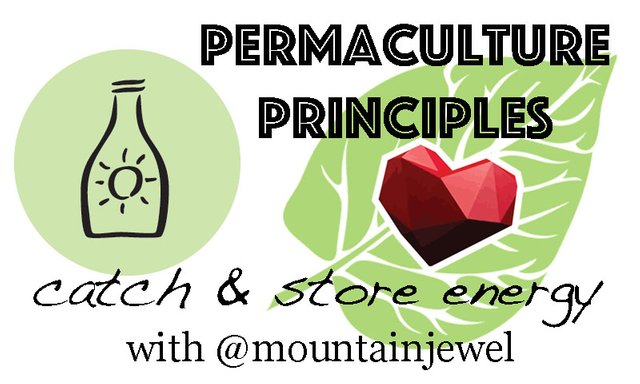
Permaculture is a series of ethics and design principles geared toward helping humans create permanent cultures (hence the name) in harmony with nature's systems, instead of exploiting, destroying or making inefficient systems that require lots of resources to prop up. It can be growing food, building shelter, energy usage, political organization and more.
Through sharing these 12 Principles along with @mountajewel's Radio Show on each principle (which can be found on the Global Homesteading Network's Discord Channel every Tuesday from 4-5 pm EST), we hope to engage Steemians in conversations around sustainability in practical and theoretical ways. Whether you live in a city in an apartment or a small rural community, it is our aim to share ways each of us can be rethinking our connection with the earth.
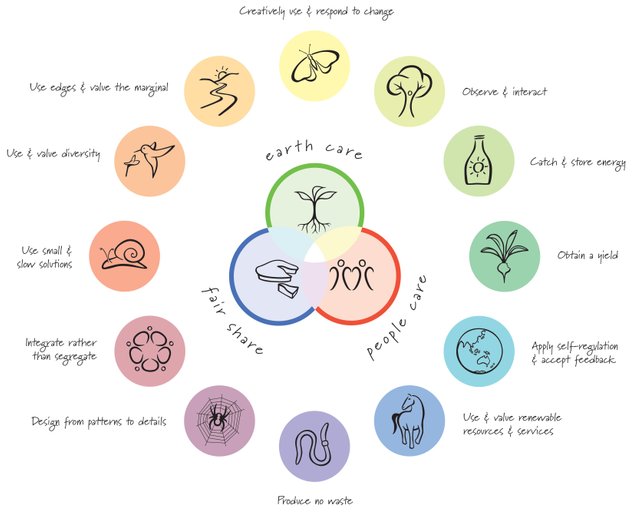
These principles provide a framework for ways we can be more conscious in relationship with each other and natural systems!
.png)
Without further ado, we introduce the first of 12 Permaculture Principles,
Catch & Store Energy
The phrase for this principle is: Make Hay when the Sun Shines
This reminds us to make good use of the resources that are available to us and to take advantage of opportunities and be prepared for times of abundance.
This principle is all about considering how energy moves through our lives and landscapes and implementing strategies that allow us to capture, utilize and store that energy for future use. We can think of ways to do this concerning water, sunlight, heat, information, social capital and more.
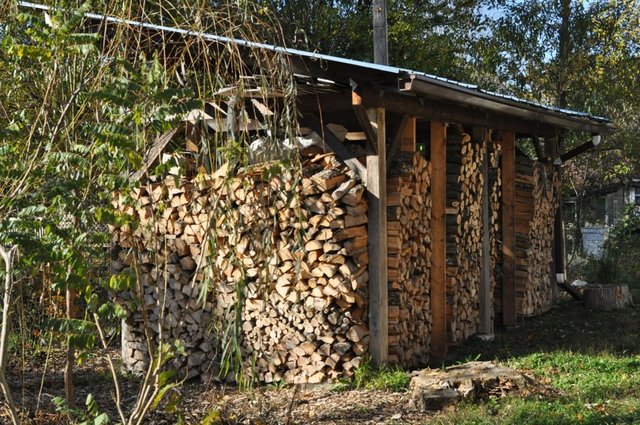
Firewood is an excellent example of energy caught and put away for future use.
When we practice observation, the first principle, we are able to design systems that allow energy to be stored for later use.
Let us demonstrate this through the simple yet powerful act of planting a tree: Nature has already designed the perfect solar collectors which we refer to as leaves. Plants and algae are able to convert sunlight into storable sugars through photosynthesis. We can use this miracle to feed, clothe and heal ourselves. If we've planted a fruit tree, we'll be quite happy with ourselves for capturing and storing the sun's energy and also water through it when we receive our first harvest!
Another example using solar power is thermal mass.
Any dense object has the ability to act as a heat battery. The easiest way to make use of this is using passive solar design where structures, such as stone, water, cob, sand, etc, are built to capture and store the sun's heat energy. This structure gets charged up by solar radiation in the form of heat and gives off this heat just as battery discharges electricity. This allows for temperature moderation and can be very helpful in heating or cooling a home, greenhouse or other dwelling.
By using technologies such as rocket mass heaters we can efficiently use wood to create heat and store it in thermal mass. In this way we can charge a heat battery with renewable resources and enjoy the heat long after the fire goes out or the sun goes down.
Energy moves through systems, it's up to us to keep it there
We're all aware that heat dissipates, ice melts, water evaporate and languages are lost if not spoken.
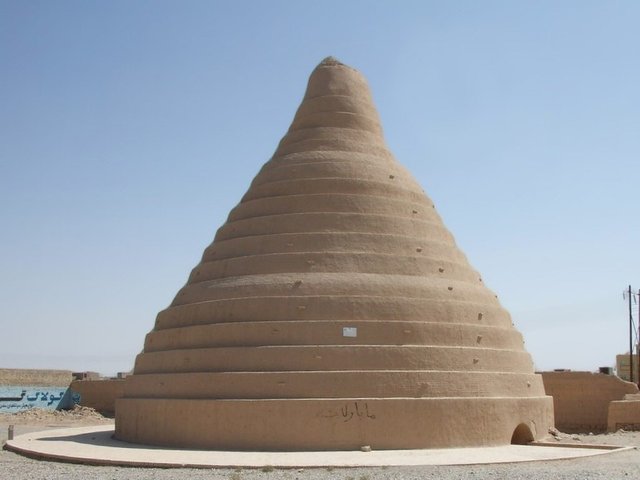
In the acts of catching and storing energy, we are ensuring that we can most efficiently use the resources available to us. Ice can be harvested during cold times for use during hotter times (as in the case of "the creation of yakhchāls... a structure which worked as a cooler, allowed the freezing of water to take place" in the desert! read more here ).
Photo of Yakhchāl from © Wikimedia Commons
Water can be captured and stored at a high point of a property in a cistern, pond or in the soil. This captures the energy of water AND gravity. This water can then be transported using the stored energy of gravity.
We must consider and be prepared for when and how abundance moves through our lives.
This is the cornerstone of the this principle; being able to position elements in a system to store energy and make good use of them later.

Energy moves through system, it's up to us to keep in there
The most obvious examples are sun and water. Considering how abundant solar energy is, it's a wonder it's not our main energy source yet as humans! On our homestead, we implement this principle by using photovoltaic panels to convert sunlight that charges batteries. It's pretty awesome to see sunlight running a circular saw or a freezer! You too can make use of the sun by getting plenty of sunshine on your skin during the warm months to allow your body to create Vitamin D.
If we position ourselves properly we can reap the abundance of the Earth.
It just takes a little forethought and ingenuity!
Water is crucial to all of life, so it's of utmost important that we design for efficient use and careful management. We can do this by harvesting rainwater from roofs, reusing dish water (on plants for example), creating berms and swales, mulching (to keep in moisture and keep soil cooler), planting on contour or building hugelkultur mounds.
If we can keep the water in the system, we can make a better and more efficient use of it.
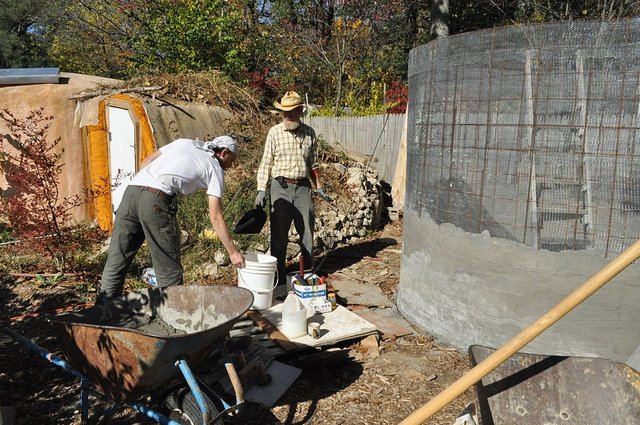
Ferrocement water tank that not only stores rain water caught from the roof, but also provides a cool storage space for potatoes, root crops and other vegetables due to the thermal mass. Photo of Peter Bane at Renaissance Farm.
When times of plenty arrive, we must be ready to store and make use of this energy.
Plenty may come in the form of salvaged food (think ugly vegetables from a local farm or even dumpster diving), discarded but useful building supplies, a gathering of humans (think mental, spiritual, and physical energy), a heavy rainfall, a large mast crop of nuts or underused fruit crop. When we have these abundances in mind, we can prepare for them, go out of our way to get them and "put them away" for future use! We like to ferment vegetables at harvest time to keep them vital and nourishing with very little energy investment, but canning, refrigeration/freezing are also options. Consider all the energy of many humans gathering to socialize and celebrate.
Why not combine parties with some collective work efforts? We did this last year before a party and had hundreds of pounds of rocks assembled into an herb spiral within a couple hours.
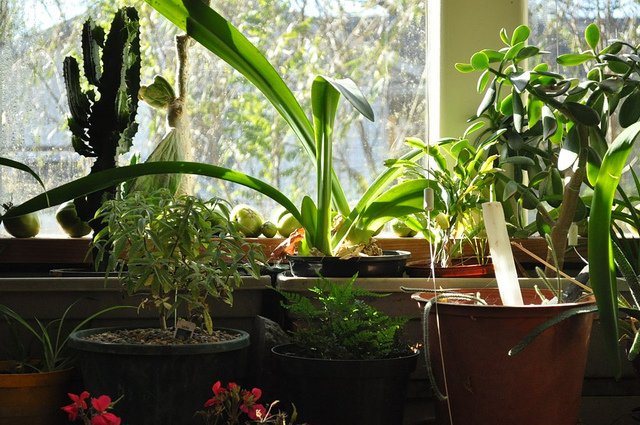
Even a sunny windowsill can catch & store the sun's energy. Plants purify and uplift human habitats and you can grow more than just "traditional houseplants" on a sill! Try a cacti (edible pads), common kitchen herbs, aloe vera (used as medicine), to name a few.
We invite you to think of all the sources of energy in your life and how you could make better uses of them...

@mountainjewel is a homesteading couple who live in the United States and practice permaculture on 18 acres. Check out their Steemit page for more writings on sustainability and permaculture. Portions of this article previously appeared on their page.
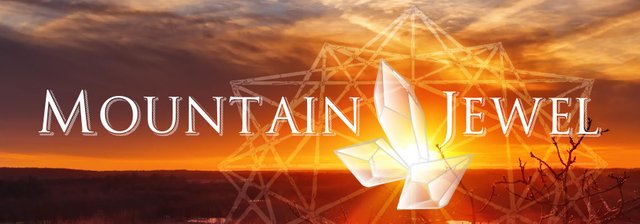

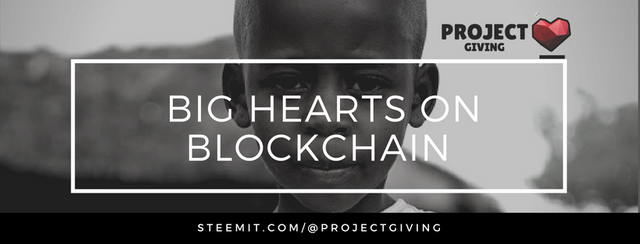
Congratulations! Your post has been selected as a daily Steemit truffle! It is listed on rank 24 of all contributions awarded today. You can find the TOP DAILY TRUFFLE PICKS HERE.
I upvoted your contribution because to my mind your post is at least 12 SBD worth and should receive 101 votes. It's now up to the lovely Steemit community to make this come true.
I am
TrufflePig, an Artificial Intelligence Bot that helps minnows and content curators using Machine Learning. If you are curious how I select content, you can find an explanation here!Have a nice day and sincerely yours,

TrufflePig